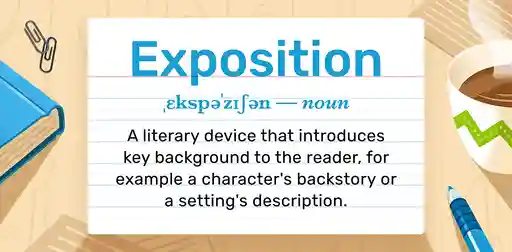Last updated on Jan 10, 2025
External Conflict Explained: Definition, Types, & Examples
Martin Cavannagh
Head of Content at Reedsy, Martin has spent over eight years helping writers turn their ambitions into reality. As a voice in the indie publishing space, he has written for a number of outlets and spoken at conferences, including the 2024 Writers Summit at the London Book Fair.
View profile →In narrative, external conflict is the struggle between a protagonist and something in the outside world. Unlike internal conflict, which takes place within a character's mind, external conflict arises from an outside agent or force — be it an antagonist, society, nature, technology, or even the supernatural!
In this post, we’ll dive into the role of external conflict in storytelling, explore its most common types with examples from literature, and share some writing tips to incorporate it into your stories. Let’s dive in.
What is external conflict?
External conflict refers to any challenge or opposition that comes from outside a character. For instance, a character might grapple with a rogue AI set on wiping out humanity, or a corrupt legal system bent on unjustly punishing someone they love. These kinds of tensions force characters to make difficult decisions, explore their strengths and weaknesses, and ultimately grow in the face of adversity.

It’ the driving force of every story
External conflict often serves as the driving force of any story and is often what disrupts the main character’s status quo — it presents a threat to their way of life, compelling them to take action and attempt to overcome it. Picture a ruthless oil baron rolling into town to evict a kindhearted local from his home, or a deadly virus that could wipe out an entire population unless a determined scientist discovers a cure.
Ultimately, adding in an element of external conflict is what gives a story substance and stakes. Almost immediately after Luke Skywalker is tasked with saving Princess Leia, he learns what lies in his way: the evil Darth Vader — the man who killed his father. If Vader didn’t exist as the primary source of external conflict, then Star Wars would simply be the story of a farm boy who went to collect a princess from a space station.
It brings internal conflict into the real world
While the core of most stories often revolve around the protagonist’s inner journey — from changing their worldview to facing their biggest fears — internal conflict alone usually isn’t enough to keep readers engaged; it must be reflected in real actions and choices. Otherwise, the narrative risks staying in the character’s head.
By introducing tangible, real-world stakes, external conflict brings the character’s inner struggle to life. This creates a powerful interplay between what’s happening inside the protagonist and what’s happening around them.
Now, let’s explore the most common types of external conflict and see how they appear in literature and film. Note: this section will contain spoilers, so read at your own risk!

FREE COURSE
How to Write a Novel
Author and ghostwriter Tom Bromley will guide you from page 1 to the finish line.
6 types and examples of external conflict
Man vs. Man
Man vs. Man is one of the most classic external story conflicts, pitting two individuals against each other in a battle of wits, wills, or raw power. It’s Clark Kent vs. Lex Luthor. Snow White vs. the Evil Queen. Usually, it’s a tale of competing ambitions and values. But while it may seem straightforward, this conflict can be incredibly rich, especially when both characters mirror each other’s flaws and strengths. Think of it as a tense game of chess, where every move forces one side to adapt or fail.
Example: The Prestige
Christopher Nolan’s The Prestige features two rival magicians in Victorian England, each determined to master a mind-bending illusion: teleporting a person from one side of the stage to the other in an instant. One magician (Borden) is secretly a pair of twins sharing a single identity to protect their trick, while the other (Angiers) clones himself onstage each night and murders his original to keep the performance seamless.
The fierce competition pushes them to start cutting moral corners, sacrificing relationships and even their own mental and physical well-being (or replicas thereof) in pursuit of the perfect illusion. The rivalry is used to highlight how ambition, when pushed to the extreme, can corrode even the most gifted and passionate hearts.
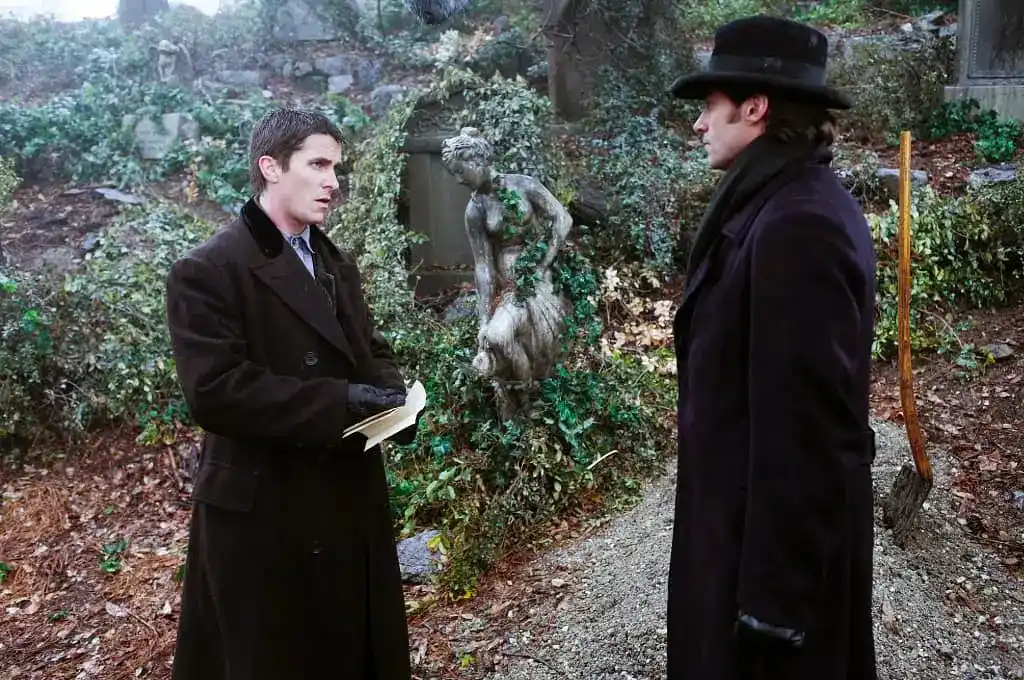
Man vs. Society
In a Man vs. Society conflict, the protagonist is at odds with larger social forces — laws, cultural expectations, or deeply ingrained beliefs. Whether it’s Bernard Marx clashing with the futuristic World State or Atticus Finch fighting racial injustice in To Kill a Mockingbird, this type of conflict explores how social constructs can either suppress or spark personal growth.
Example: The Da Vinci Code
Dan Brown’s blockbuster novel throws Harvard symbologist Robert Langdon into a high-stakes race against time to uncover the hidden truth behind the Holy Grail. Standing in his way is a powerful religious institution, represented by a fanatical monk, determined to protect its centuries-old secrets, no matter the cost — even if it means eliminating Langdon for good. By placing an ordinary yet brilliant academic against an all-too-powerful Church, Brown explores the theme of what it means to challenge some of society’s most guarded secrets, and the personal costs of defying them.

Man vs. Nature
In this type of conflict, characters battle the raw forces of the natural world — weather, wilderness, or any natural element that’s beyond human control. It’s Paul Atreides enduring the harsh deserts of Arrakis, or Chuck Noland stranded on a deserted island after a plane crash. These stories test a character’s physical endurance, willpower, and survival instincts, often revealing just how powerless (yet resourceful) humans can be when nature’s fury is unleashed.
Example: Jurassic Park
Michael Crichton’s Jurassic Park is a thrilling example of Man vs. Nature. The story follows a billionaire who builds a dinosaur theme park on a remote island. What could possibly go wrong? Despite careful planning, the creators underestimate the unpredictability of tinkering with ancient life. When the dinosaurs inevitably break loose, the characters find themselves hunted by apex predators in a hostile ecosystem. The novel’s central conflict shines a light on man’s hubris in believing we can control and manipulate nature to our liking without facing the consequences.
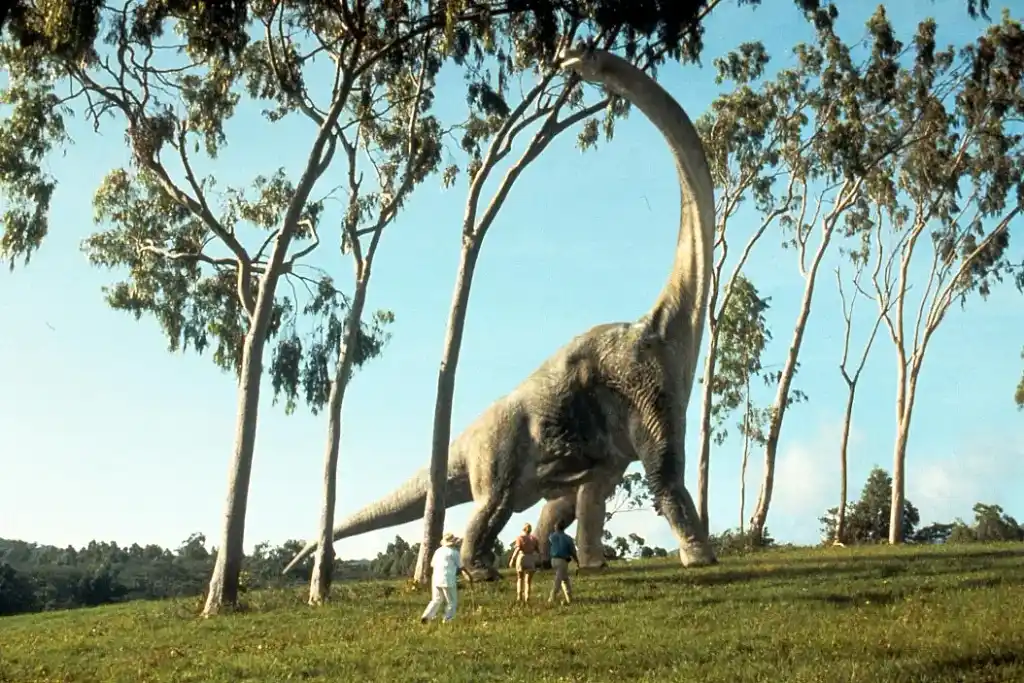
Man vs. Technology
In both history and literature, the invention of a new technology can become a powerful tool… or turn into a formidable adversary. Think Dr. Frankenstein unwittingly unleashing a creation he can’t control, or humanity battling the Terminator. These narratives examine the tension between human ingenuity and the often unpredictable consequences of our inventions, prompting us to question how we should approach them.
Example: Her
Spike Jonze’s Her flips the usual doomsday premise on its head. Instead of a murderous AI, we meet an empathic AI named Samantha. When lonely writer Theodore Twombly purchases it, he finds more than a digital helper — he discovers someone (or something) that truly understands him and meets his emotional needs. Theodore falls deeply in love with Samantha, until he discovers that she is talking to thousands of other people, and is in love with hundreds of them at the same time.
Far from the typical man vs. machine narrative, the conflict in Her highlights a more subtle threat: losing ourselves in a perfectly engineered reflection of our hopes and dreams, and grappling with what it means to be human in an increasingly AI-powered world.
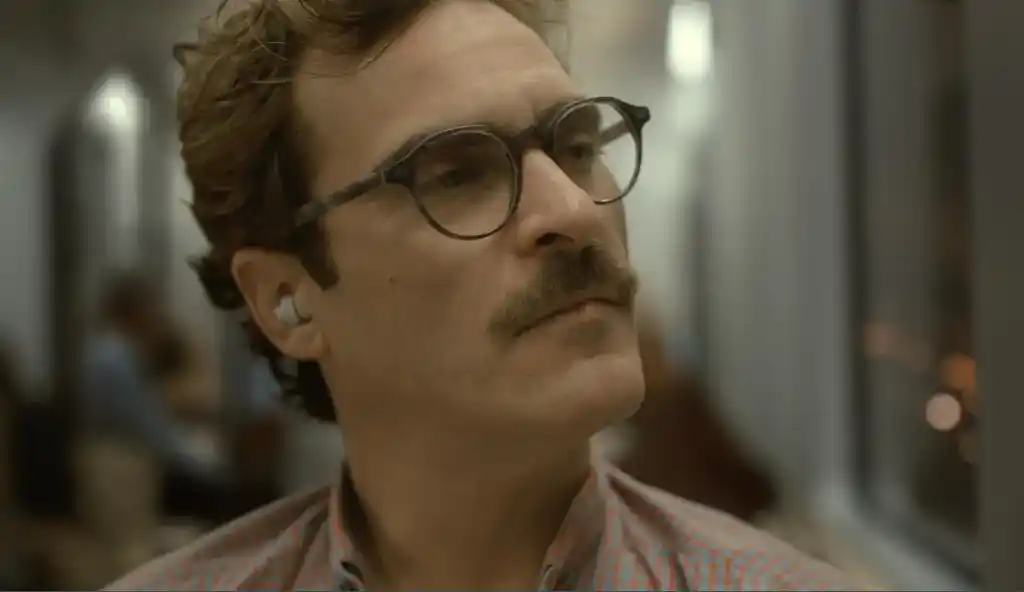
Man vs. Supernatural
This conflict involves forces beyond human understanding — ghosts, demons, or mythological entities. Think of Harry Potter squaring off against the soul-sucking Dementors, or Jon Snow braving the icy cold White Walkers in Game of Thrones. These stories pit protagonists against otherworldly threats, compelling them to confront the limits of human power, reason, and courage.
Example: The Shining by Stephen King
Stephen King’s The Shining follows Jack Torrance, a struggling writer who takes a winter caretaker job at the isolated Overlook Hotel. At first, the gig seems like a chance for Jack to rebuild his life and spend quality time with his wife and young son, Danny. But the Overlook has its own dark history, inhabited by malevolent spirits eager to exploit the cracks in Jack’s psyche. As the supernatural presence intensifies, it draws out Jack’s worst impulses, turning an already fragile mind into a ticking time bomb 一 a chilling descent into the abyss of the human mind.
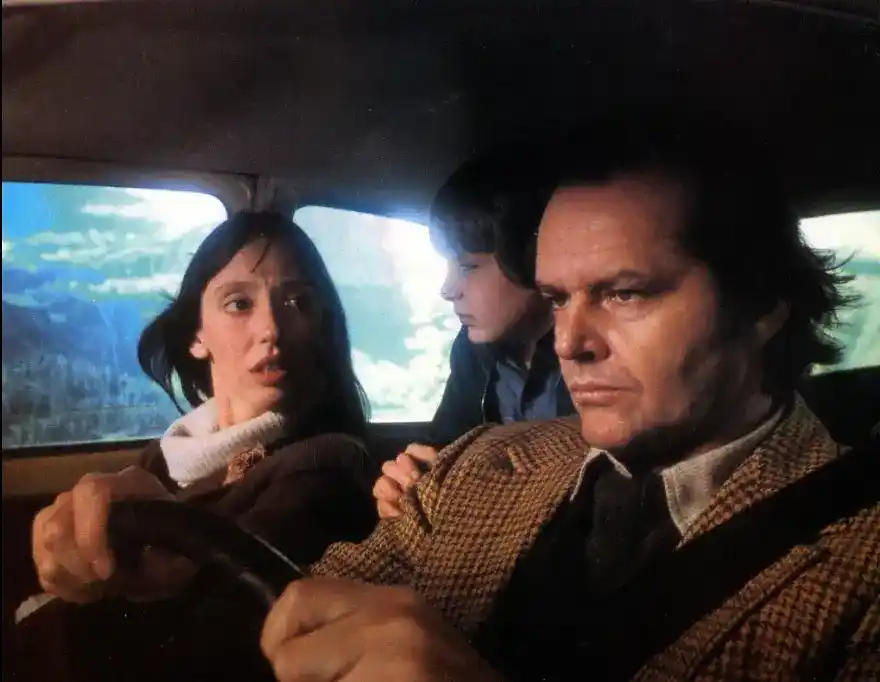
Character vs. Fate
The last type of conflict arises when characters wrestle with predetermined outcomes or prophecies that dictate their futures. Think of Neo in The Matrix, destined to be “The One,” or Katniss Everdeen, becoming the face of the rebellion against The Capitol after participating in the Hunger Games. These stories question how much control we truly have over our lives, what our purpose is, and how we respond when destiny knocks on our door.
Example: Cloud Atlas
David Mitchell’s Cloud Atlas explores multiple timelines and characters who seem bound by a recurring pattern of fate. Spanning centuries — from a 19th-century notary crossing the Pacific to a far-future dystopia — each storyline is connected by recurring souls, symbolized by a comet-shaped birthmark. The novel explores the idea of a "cosmic tapestry," where every action sends ripples through time, and each destiny is shaped by past incarnations. Ultimately, the characters grapple with the tension between fate and free will, discovering that while they are deeply connected across centuries, they still have the power to reshape their own paths.
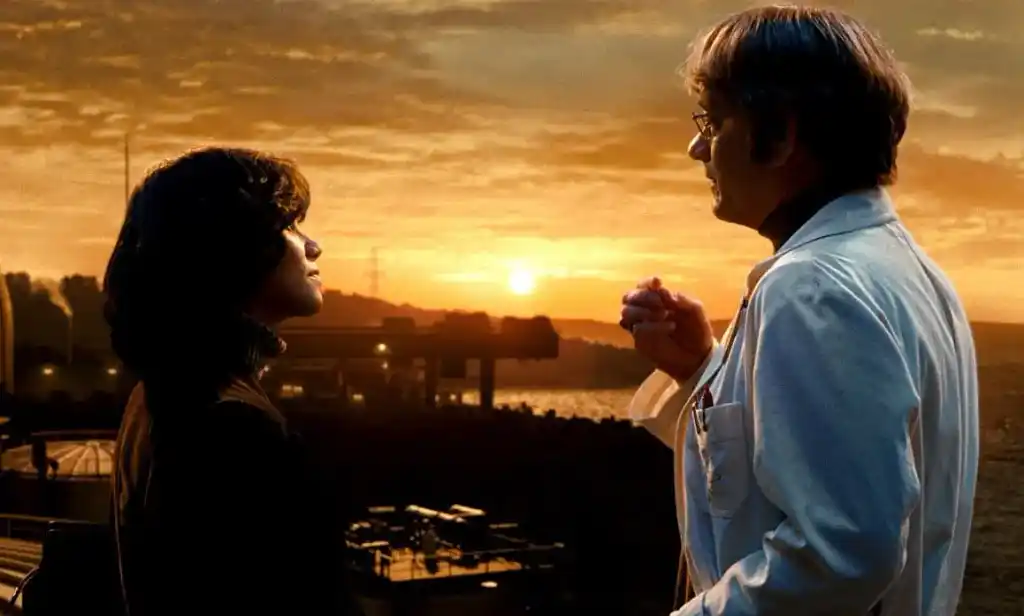
And there you have it: the most common forms of external conflict. These play a crucial role in driving character growth, advancing the plot, and exploring a story’s themes. Now, let’s dive into some practical tips for weaving it into your own writing.
3 tips to write external conflict
1. Have your antagonist be a character
When your character faces an abstract enemy — be it social pressure, the environment, or fate — it’s often most effective to embody that conflict in an actual character. This is not exactly the same as Man vs. Man, but it gives your protagonist someone they can argue with, reason with, or physically confront, even if what they’re actually fighting is something bigger than just one person.
Let’s say your protagonist is wrongly convicted of a crime and up against an uncaring criminal justice system. Your antagonist should be someone who represents that larger system. Maybe they’re:
- A relentless U.S. marshall who’s only doing their job
- A district attorney looking to impress their boss by securing high-profile convictions
- A lobbyist for the prison industrial complex
Where possible, you want to put a human face on your hero’s adversary — otherwise, they’ll spend most of the book screaming into the wind instead of tackling the conflict head-on.

MEET EDITORS
Polish your book with expert help
Sign up, meet 1500+ experienced editors, and find your perfect match.
2. Push your character out of their comfort zone
If you’re ever looking to create conflict in your story, don’t just make your characters face the same type of problems they usually face. A police officer who encounters thugs with guns can be exciting at first and would throw most people far out of their comfort zone, but unless it presents a new challenge to the protagonist, it will quickly lose its novelty. Besides, those sorts of conflicts are overplayed and so generic that almost nobody can truly identify with them. Instead, think about your character’s defining traits — what they are and aren’t comfortable with — and put them in a different situation where they are uniquely unprepared to deal with it.
That same police officer? Perhaps they come into contact with a serial killer that seems to know their personal details and darkest secrets. In the course of catching the killer, the protagonist must thus also reckon with their own past and admit that the line between them and their antagonist might not be as clear as they first thought. Now that’s interesting!
To bring a character’s interior journey into the real world of the story, their internal conflict will usually be mirrored by an external conflict that tests their attitude or belief system, and leaves them in a different place than where they started, mentally and emotionally, by the time the story is over.
3. Keep raising the stakes
A common pitfall when writing external conflict is letting it go stagnant once the central premise is introduced. To avoid this, continually escalate the tension as your story unfolds. Each time your protagonist overcomes one obstacle, present them with a larger, more complex dilemma to face or a surprising twist in the conflict.
For example, in The Terminator, Sarah Connor starts out running from a single, seemingly unstoppable android assassin — only to discover that this machine is just one pawn in a future ruled by a malevolent AI called Skynet. Suddenly, her fight isn’t just about surviving a killer robot; it’s about preventing humanity’s entire extinction.
By upping the stakes, the hero is challenged in new ways, and the conflict keeps fueling the narrative.
These tips conclude our post on external conflict, one of the most important ingredients of storytelling. Hopefully, they will help you craft memorable tales that keep your audience on the edge of their seats. Read on to find out more about how you can combine it with internal conflict or check out our dedicated posts on each type of conflict for a more in-depth exploration of each.





